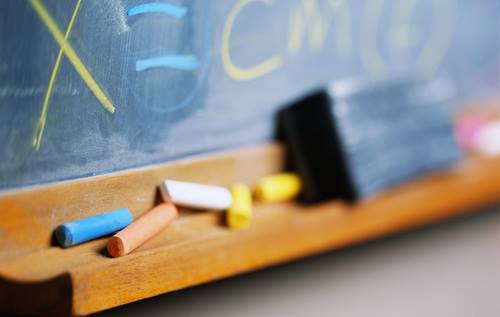The Challenges of Environmental Education in the 21st Century
Lately, I've been thinking a lot about the challenges of environmental education. I've been thinking about why it's so critical, yet often ignored by organizers and policy makers; spoken of with great passion, yet underfunded; maligned as "biased" and appropriated by corporations anxious to show environmental concern. Perhaps it's not surprising that I've been thinking about this, because I've been working in the environmental education field consistently for the last eleven years and fitfully for the last twenty. And now, I'm preparing to go back to school and of course as part of this a bit of reflection seems necessary.
The first challenge -- funding. With school spending facing its own challenges, with grantors tending to be more interested in policy rather than education, and with self-imposed limits on taking funds from polluters which we employ at the Ecology Center, finding money for our environmental education programs has always been difficult. That's one reason that we were so grateful to see a wonderful response to our Special Environmental Education Appeal. From the smallest checks of two and three dollars, to the two hundred dollar checks, every single one was also a message saying, "We believe in the power of environmental education."
The second challenge is one of delivering appropriate, relevant, and important information well. No teacher likes to teach the same thing year after year after year (it gets boring). Yet, every year we have a different crop of third graders. The material is new to them and still relevant and important. We always need to make it fresh for ourselves, too!
The third challenge is internal to the organizations doing environmental education. We do other things too, such as advocacy; we have limited time. Sometimes it seems less important to teach those third graders basic information (such as how water can get polluted) when there is a pressing policy issue. Environmental educators are prone to saying that "the students of today will be the policy makers of the future." Sometimes I would say it and not really believe it. But I recently realized just how true it is, when I found out that a student who volunteered at the Ecology Center as a high school student is now working for the Sierra Club's national office on policy issues.
The last challenge I'll mention today is perhaps the most daunting. It is educating people so that they really care about the environment. I've been thinking about the "spark." How did you become interested and concerned in the environment? Was it camping, fishing, hunting, hiking with a friend or relative? Was it participating in a biology class or reading a book like Silent Spring?
 |
| Rachel Carson, US Fish & Wildlife Employee Photo, found online here. |
The feminist movement (Ms. Magazine, actually) called the moment where you internalize the feminist world-view a "click" moment, where all of a sudden everything "clicks" into place. Rachel Carson, in her engaging book A Sense of Wonder, suggests that "If a child is to keep alive his inborn sense of wonder without any such gift from the fairies, he needs the companionship of at least one adult who can share it." Developing that sense of wonder, internalizing it, and capitalizing on it is perhaps the biggest challenge, and is sometimes called the "teachable moment." The teachable moment is when things fall into place so that you can teach and others can learn.
Sometimes people ask me how I ended up an environmental studies major. I was already interested in the environment from camping and hiking and growing up on Long Island Sound. But I remember one semester in college taking a biology class, a geology class, and an environmental studies class. It so happened that over the course of a couple of weeks we studied Darwin in each of those classes. And in each class, we learned something different about his work and how it has influenced science, social science, and Western thought. This collection of experiences was my personal environmental "click" moment. I realized that I couldlearn something from the interdisciplinary nature of environmental studies, and in this case, that the whole was bigger than the sum of its parts. So in this case, the teachable moment was actually a collection of moments, and my professors never knew about it.
Ultimately, the challenge of environmental education is, like all education, to find the teachable moment. And to capitalize on that moment, so that the person who is in the position to be taught not only learns the facts, but internalizes them. Then they can say, "Yes, I am an environmentalist, and I believe that what I do makes a difference." It does.
Ruth Kraut has worked at the Ecology Center since 1986. In September, she will be starting at the University of Michigan to get an M.A. in Education and an M.P.H. in Public Health.

No comments:
Post a Comment